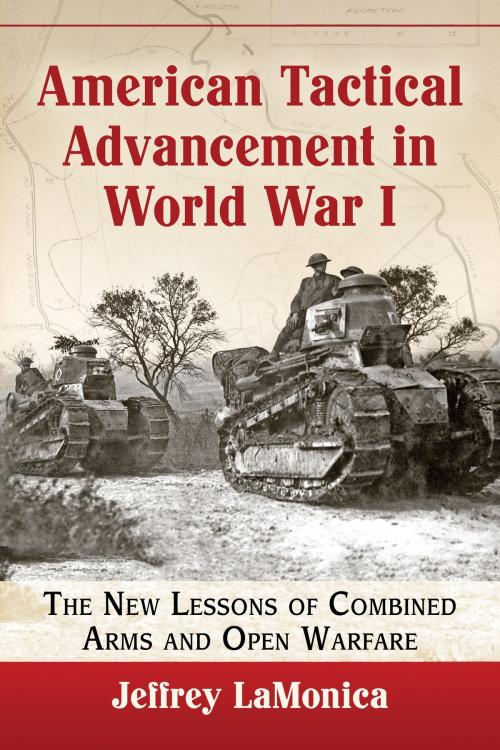American Tactical Advancement in World War I
The New Lessons of Combined Arms and Open Warfare
Nonfiction, History, Military, World War I| Author: | Jeffrey LaMonica | ISBN: | 9781476628455 |
| Publisher: | McFarland & Company, Inc., Publishers | Publication: | August 8, 2017 |
| Imprint: | Language: | English |
| Author: | Jeffrey LaMonica |
| ISBN: | 9781476628455 |
| Publisher: | McFarland & Company, Inc., Publishers |
| Publication: | August 8, 2017 |
| Imprint: | |
| Language: | English |
The U.S. Army evolved into a truly modern fighting force during World War I. When the U.S. entered the war in 1917, the infantry was its primary offensive arm. Training focused mainly on target practice, bayonet charges and marching drills. Antiquated tactics emphasized massive attack waves relying on ferocity to achieve battlefield objectives. Heavy casualties resulted when inexperienced American troops encountered entrenched German veterans trained in the use of modern artillery and machine guns. By war’s end the American Expeditionary Force had progressed along a bloody learning curve, developing sophisticated techniques—small flexible formations, fire-and-maneuver and infiltration—for breaking the trench warfare stalemate. Eventually, the AEF integrated new weapons like poison gas, tanks and aircraft into its offensive tactics and pioneered the mechanized combined arms warfare still practiced by the U.S. Army. The exploits of the Fifth “Red Diamond” Division exemplify this critical period of development.
The U.S. Army evolved into a truly modern fighting force during World War I. When the U.S. entered the war in 1917, the infantry was its primary offensive arm. Training focused mainly on target practice, bayonet charges and marching drills. Antiquated tactics emphasized massive attack waves relying on ferocity to achieve battlefield objectives. Heavy casualties resulted when inexperienced American troops encountered entrenched German veterans trained in the use of modern artillery and machine guns. By war’s end the American Expeditionary Force had progressed along a bloody learning curve, developing sophisticated techniques—small flexible formations, fire-and-maneuver and infiltration—for breaking the trench warfare stalemate. Eventually, the AEF integrated new weapons like poison gas, tanks and aircraft into its offensive tactics and pioneered the mechanized combined arms warfare still practiced by the U.S. Army. The exploits of the Fifth “Red Diamond” Division exemplify this critical period of development.















